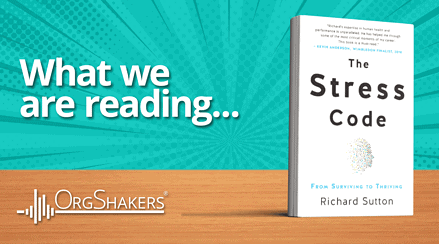Menu

The Hidden Costs of a Bad Hire and how to Get Recruitment Right?
What are the Costs of a Bad Hire?
Hiring the right talent is crucial for any organization’s success. However, making a bad hire can have significant financial and cultural repercussions. Some of the biggest costs of a bad hire include financial, but also time, including the time to interview, onboard, and re-do the hiring process again.
Understanding these costs is crucial so your business can implement effective recruitment strategies to mitigate risks and build a stronger workforce.
Understanding the Costs of a Bad Hire
A bad hire can be costly, both financially and culturally. According to a recent study by the Society for Human Resource Management (SHRM), the average cost to replace an employee ranges from one-half to two times the employee’s annual salary. Our lists below highlight further the different hidden costs a bad hire can cause for your business.
The Financial Costs of a Bad Hire
- Recruitment, advertising, and agency fees
- Interview time and HR resources
- Onboarding and training expenses
- Severance or legal costs
- Lost revenue from decreased output
- Increased operational costs from rework or mistakes
- Additional supervision or corrective management required
The Cultural Costs of a Bad Hire
- Negative impact on team morale and cohesion
- Disruption to workplace culture and productivity
- Poor customer experience affecting company reputation
- Increased stress or burnout among existing employees
- Reduced employee engagement and retention
- Lower trust in HR and leadership decisions
Common Recruitment Pitfalls to Avoid
To improve hiring processes and reduce the risk of bad hires, organizations should be aware of the common recruitment pitfalls:
- Unclear job descriptions: Vague or misleading job descriptions can attract unsuitable candidates. Ensure job adverts accurately reflect the role’s responsibilities and requirements.
- Over-reliance on resumes: Resumes alone may not provide a complete picture of a candidate’s abilities. Incorporate skills assessments and behavioural interviews to gain a better understanding.
- Neglecting cultural fit: Hiring candidates who don’t match your company’s work culture can lead to dissatisfaction and high turnover rates. Make sure to assess their cultural fit during the interview process.
- Slow decision-making: A drawn-out hiring process can cause candidate disengagement or loss of top talent to faster-moving competitors. Establish a clear and efficient way to interview to avoid unnecessary delays.
- Bias in interviewing: Unconscious bias can affect hiring decisions. Use standardized interview questions and involve multiple interviewers to ensure fairness.
How to Improve the Hiring Process?
Implementing a structured and data-driven hiring process can lead to significantly better recruitment outcomes.
- Define the clear role expectations. By establishing specific, measurable, achievable, relevant, and time-bound (SMART) goals for each position will help to ensure alignment with organizational objectives.
- Streamline the hiring process by reducing unnecessary steps. This will speed up the recruitment process without compromising candidate evaluation. Utilize technology such as applicant tracking systems (ATS) and other HR tools to automate administrative tasks and improve efficiency.
- Focus on the candidate experience by maintaining clear and consistent communication throughout the hiring process, enhancing engagement and satisfaction.
- Finally, prioritize continuous improvement by regularly reviewing and refining the hiring process based on feedback and outcomes to ensure it remains effective and aligned with organizational goals.
How to Avoid Bad Hires?
Avoiding bad hires is easy when the correct procedures and standards are set in place. Having well-defined HR policies are also essential for guiding the recruitment process and ensuring consistency and fairness. Below are some more examples of some of the best ways to avoid bad hires:
- Standardized procedures: Establish standard operating procedures for each stage of the hiring process to maintain consistency.
- Legal compliance: Ensure recruitment practices comply with all relevant laws and regulations to avoid legal issues.
- Training and development: Provide training for HR personnel and hiring managers to enhance their skills and knowledge in recruitment best practices.
- Performance metrics: Implement metrics to evaluate the effectiveness of recruitment strategies and identify areas for improvement.
Concluding the Importance of Improving the Hiring Process
The financial and cultural impact of poor hiring decisions can be substantial.
By understanding the costs associated with bad hires and implementing effective recruitment strategies, organizations can improve their hiring processes, reduce risks, and build stronger, more cohesive teams. Investing in a well-structured hiring process and robust HR onboarding policies is essential for long-term organizational success.
OrgShakers helps businesses refine their hiring processes and talent strategies to ensure every hire is a strong fit, benefiting both the company and the individual.
Contact us today to see how our expert guidance can help you make better hires, improve retention, onboarding and build a more engaged workforce.



